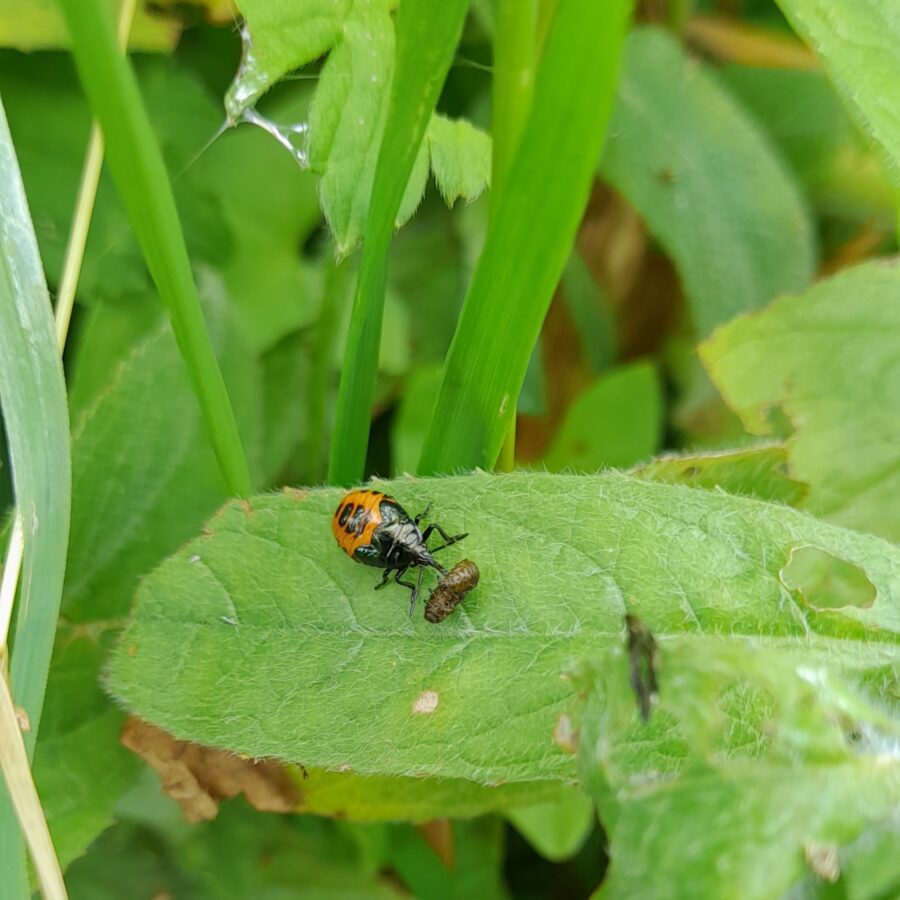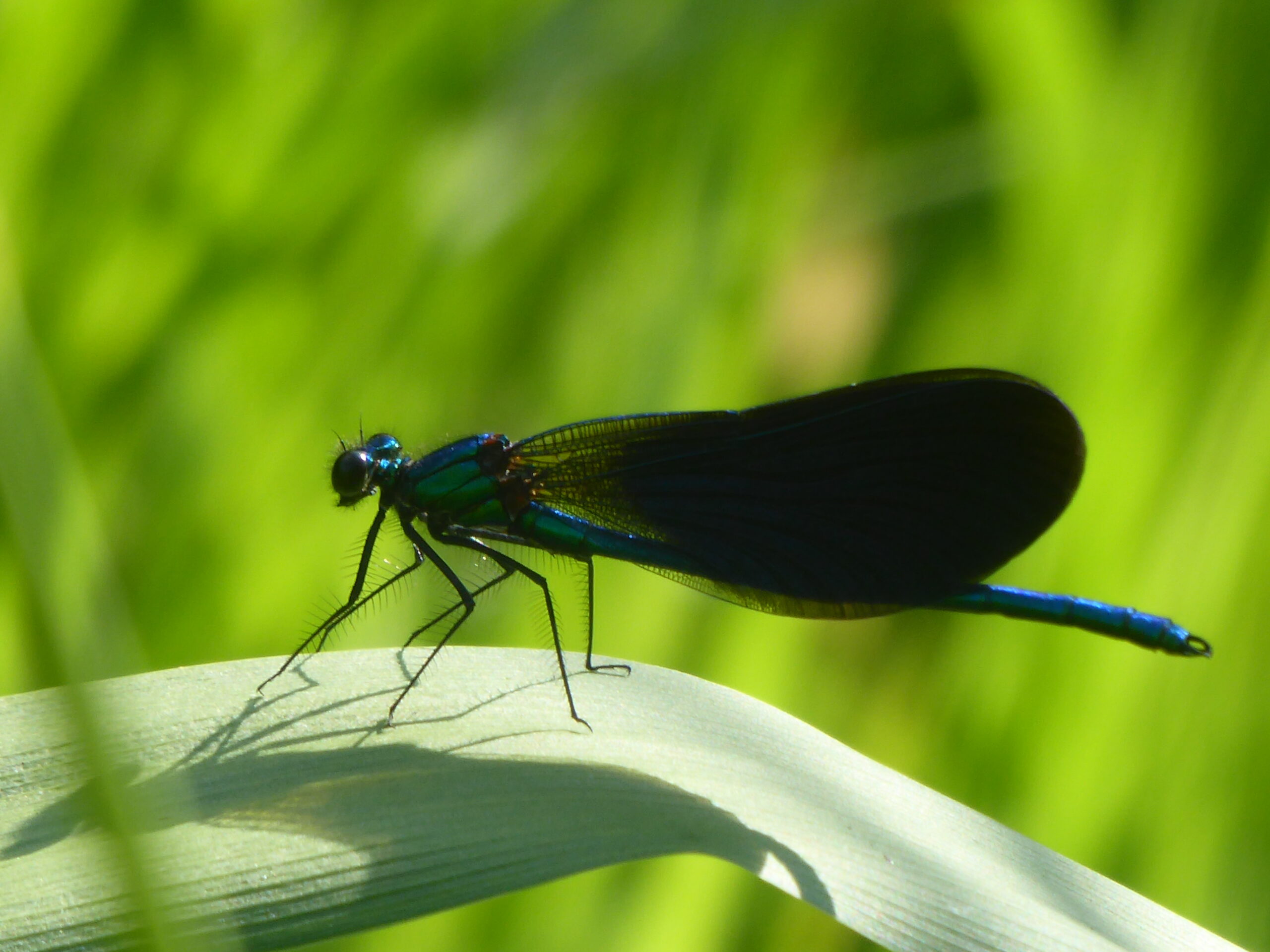My best photo of July was taken just after we returned from holiday (16 July) – a male beautiful demoiselle. I was hoping it might be a banded demoiselle because of the translucent bit at the base of each wing, but banded demoiselles have a definite ‘thumb print’ of shade on translucent wings.
Things that flowered:
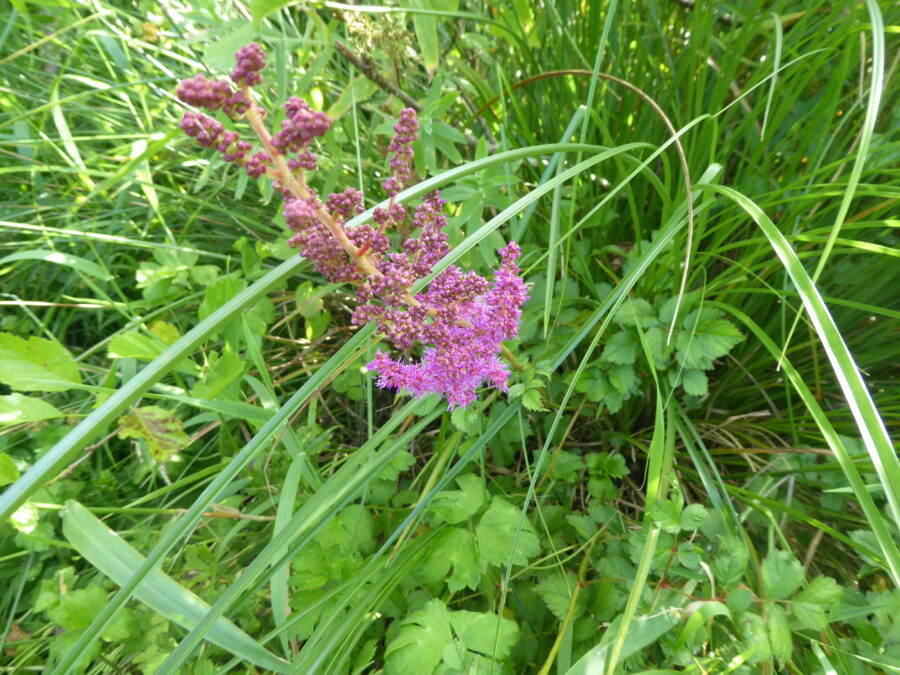
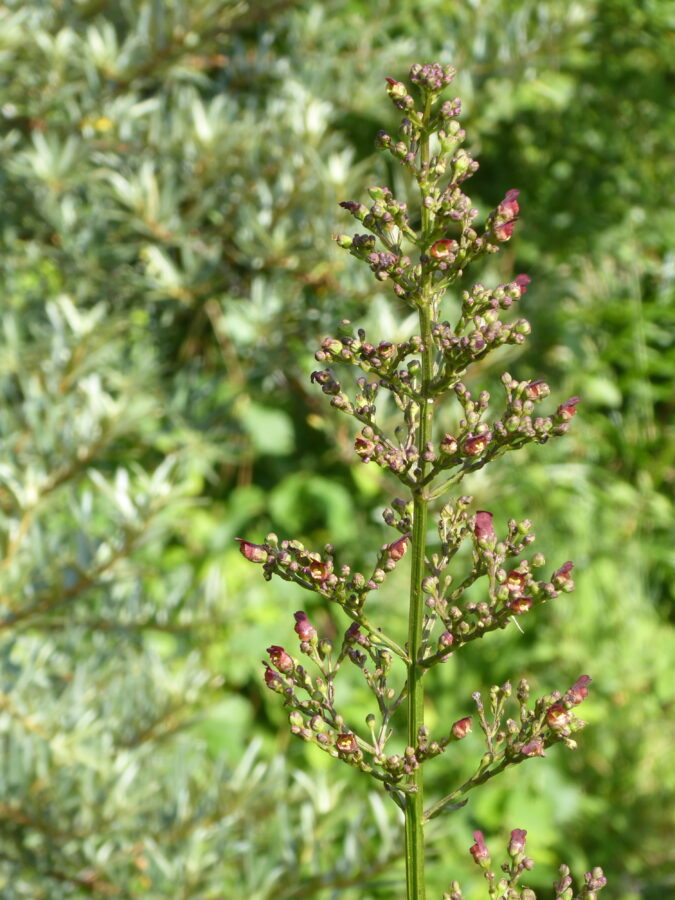

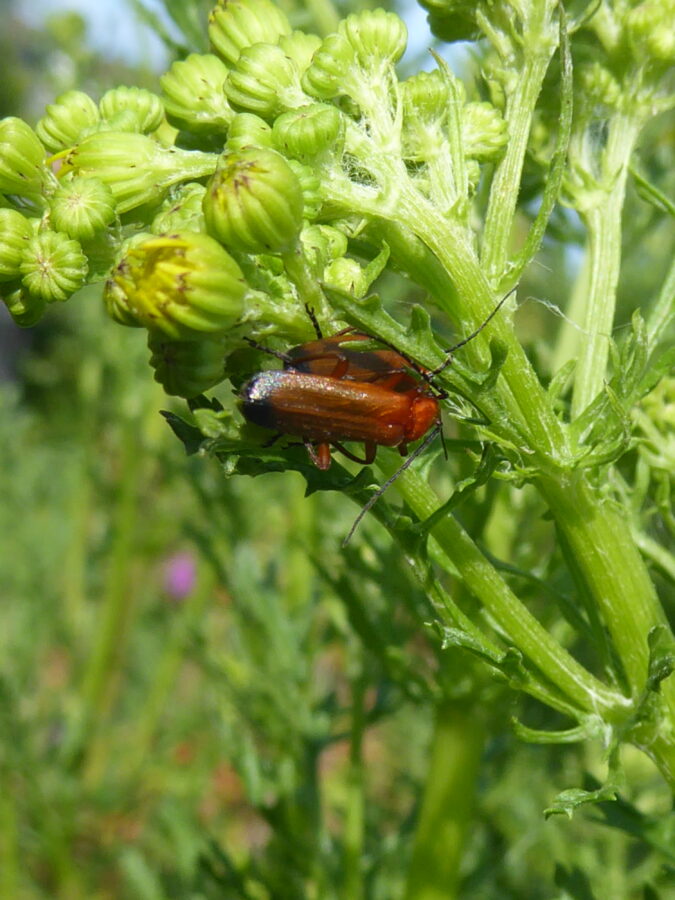
The ragwort had come into flower and the cinnabar moth that we saw earlier in the summer had obviously been at work:
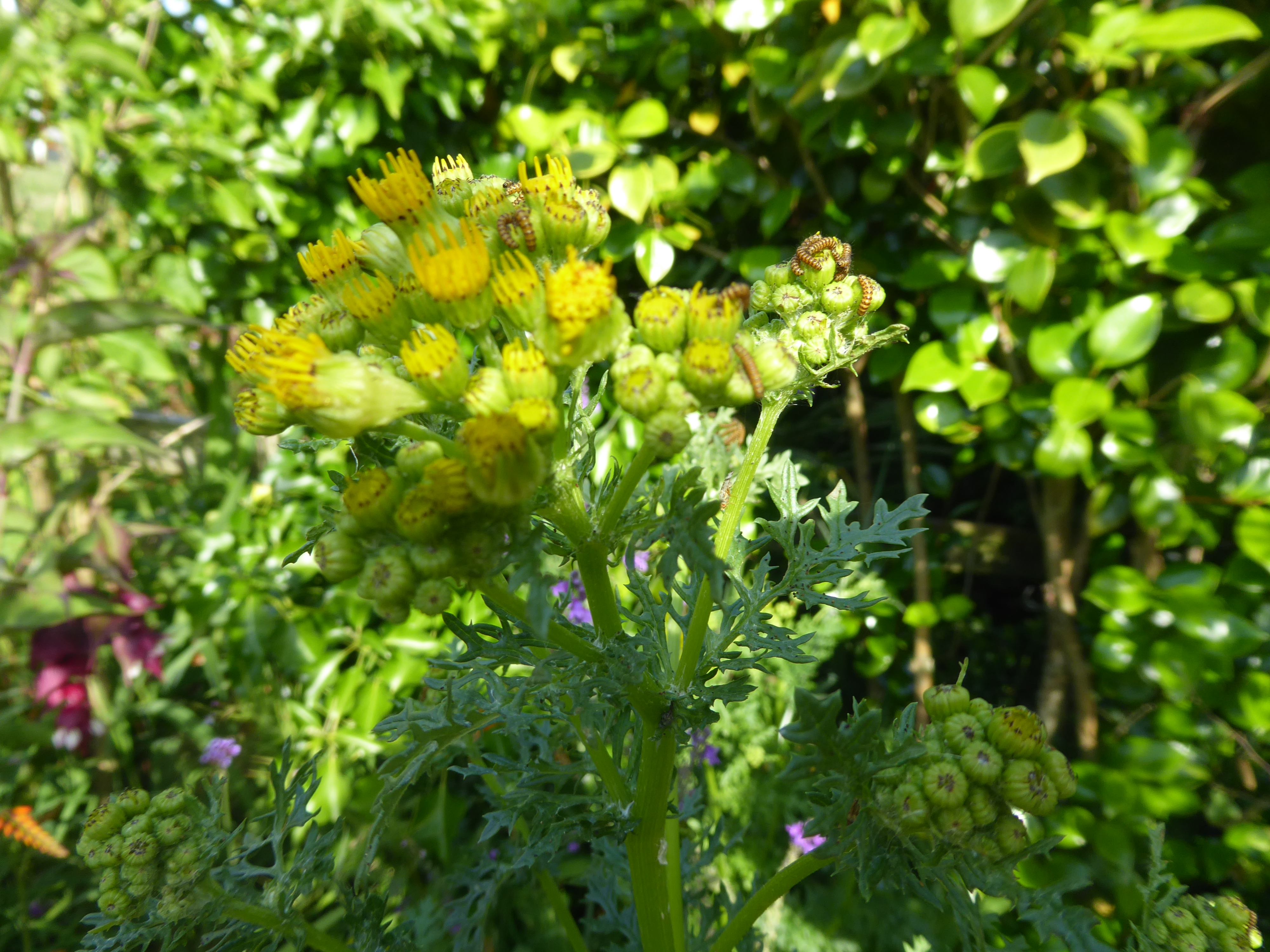
I was hoping to see them growing bigger with more defined stripes, but I didn’t. I wondered if a bird had eaten them despite their waspish colouring, but I found out that they have few predators, as the ragwort poison is stored in the body of a cinnabar caterpillar, even into moth-hood, and their vivid stripes act as a warning of their foul taste to birds.
At the end of the month, I saw the final instar of a blue shieldbug. The sheer number and variety of sheildbugs has delighted me since I started naturewatching. The intricate patterning of some of the instars and adults is amazing.
I wondered why the instar wasn’t blue in colour, but if you look at the darker head and wing-buds they have a green-blue sheen to them.
